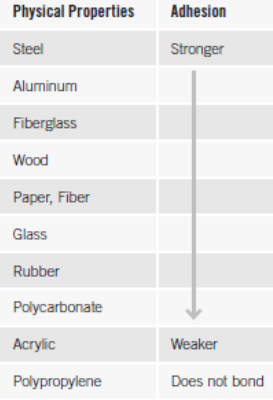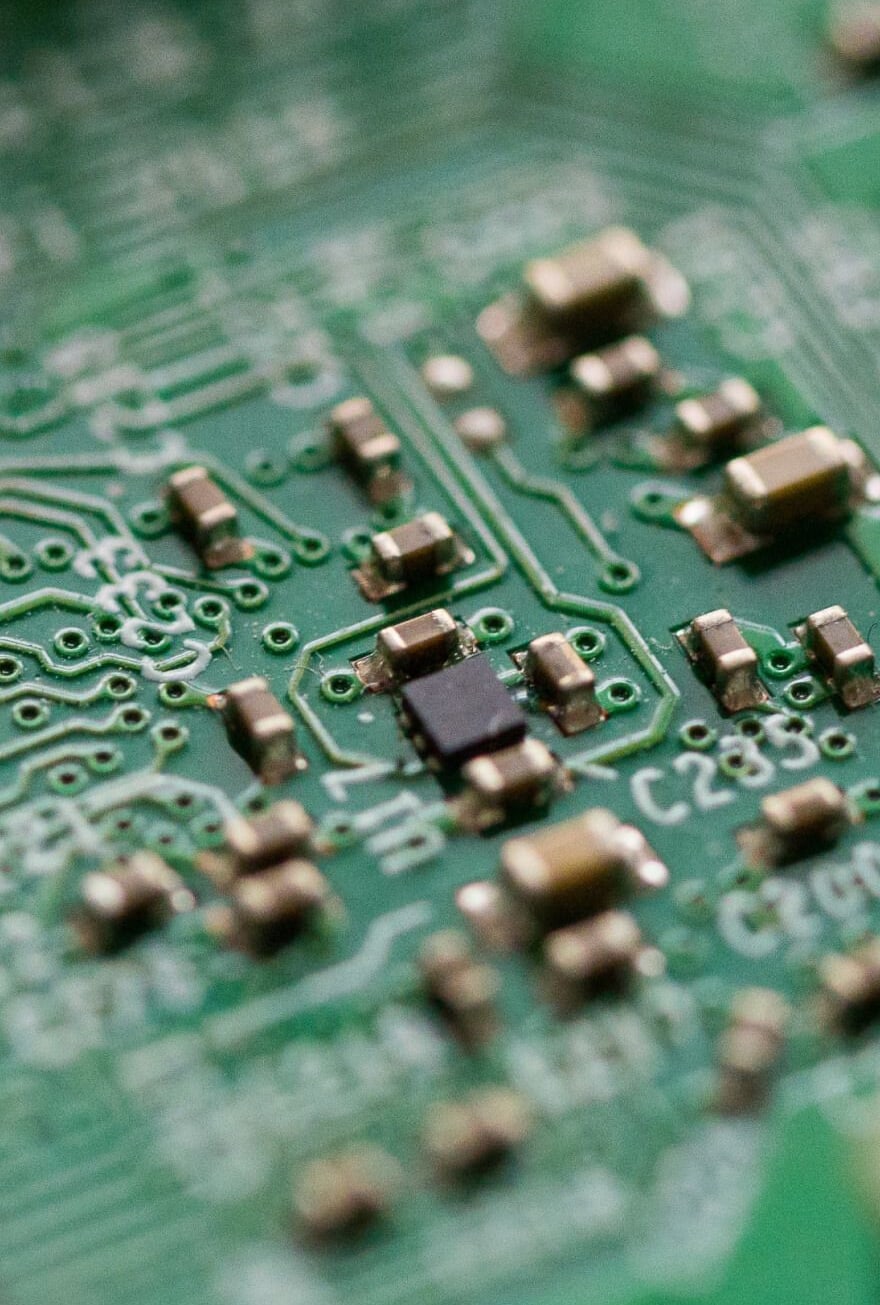Knowde Enhanced TDS
Identification & Functionality
- Chemical Family
- Product Type
- Technologies
- Product Families
Features & Benefits
- Ready-to-Use Product Features
- Key Attributes
- Thermal conductivity: 1.1 W/(m·K)
- 1:1 mix ratio
- Working life: 45 minutes
- Cure time: 24 hours at room temperature or 2 hours at 65 °C (149 °F)
- Provides strong electrical insulation
- High tensile strength
- Strong resistance to humidity, salt water, mild bases, and aliphatic hydrocarbons
- RoHS 3 compliant
Applications & Uses
- Applications
- Application Method
- Application Instructions
For best results, follow the procedure below. For quantities less than 1 mL or for stricter stoichiometry control, mix by weight with a high-precision balance. Heat cure to achieve optimal conductivity.
Syringe or Cartridge
- To insert the cartridge in the gun, see the Application Guide section for dispensing accessories.
- Twist and remove the cap from the cartridge or syringe. Do not discard cap.
- Dispense a small amount to ensure even flow of both parts.
- (Optional) Attach a static mixer.
- Dispense and discard 3 to 5 mL of the product to ensure a homogeneous mixture.
- After use, dispose of static mixer.
- Without a static mixer, dispense material on a mixing surface or container, and thoroughly mix parts A and B together.
- To stop the flow, pull back on the plunger.
- Clean nozzle to prevent contamination and material buildup.
- Replace the cap on the cartridge or syringe.
Dispensing Accessories
Consult the table below for appropriate accessory selection. See the Application Guide for instructions on using the dispensing accessories.
Cat. No. Dispensing Gun Static Mixer 8329TFM-25ML N/A N/A 8329TFM-50ML 8DG-50-1-1 8MT-50, 8MT-50FT - Compatibility
Adhesion : 8329TFM epoxy adheres to many materials found on printed circuit assemblies; however, contaminants like water, oil, and greasy flux residues may affect adhesion. If contamination is present, clean the printed circuit assembly with an electronic cleaner such as MG Chemicals 824 Isopropyl Alcohol. For substrate substances with weak adhesion strengths, surface preparation such as sanding or pre-coating with a suitable primer may improve adhesion.
Chemical Resistance : Once cured, the epoxy adhesive is inert under normal conditions. It will resist water and salt exposure. It is expected to resist short term exposures to fuels or similar non-polar organic solvents, but it is not suitable for prolonged exposures. Avoid use with strong acids, strong bases, or strong oxidizers.
Substrate Adhesion (In Decreasing Order)

Properties
- Color
- Physical Form
- Physical Properties
- Thermal Properties
- Typical Properties
- Electrical Properties
- Cured Properties
- Uncured Properties
- Uncured Properties
Physical Properties Part A Part B Color Black Dark gray Viscosity @25 °C [77 °F] Not available 2 000000 cP [2000 Pa·s] a) Density 2.23 g/mL 2.18 g/mL Odor Mild Amine - a) Brookfield viscometer at 2 rpm with spindle RV S95
- Reference fit
- a) To allow comparison between products, the dielectric strength was recalculated with the Tautscher equation fitted to 5 experimental values and extrapolated to a standard thickness of 1/8” (3.175 mm).
- b) Coefficient of Thermal Expansion (CTE) units are in ppm/°C = in/in/°C × 10-6 = unit/unit/°C × 10-6
- Note
Cured Properties
Physical Properties
- Note: Specifications are for epoxy samples cured at 65 °C for 2.5 h and conditioned at ambient temperature and humidity.
- a) N/mm2 = mPa; lb/in2 = psi
Electrical Properties and Thermal Properties
- Note : Specifications are for epoxy samples cured at 65 °C for 2.5 h and conditioned at ambient temperature and humidity.
- a) To allow comparison between products, the dielectric strength was recalculated with the Tautscher equation fitted to 5 experimental values and extrapolated to a standard thickness of 1/8” (3.175 mm).
- b) Coefficient of Thermal Expansion (CTE) units are in ppm/°C = in/in/°C × 10-6 = unit/unit/°C × 10-6
| Value | Units | Test Method / Conditions | |
| Color | Black | — | — |
| Density (at 26 °C, 79 °F) | 2.18 | g/mL | ASTM D 1475 |
| Lap Shear Strength (Stainless Steel) | 9.0 (1 300) | N/mm2 (lb/in2) | ASTM D 1002 |
| Lap Shear Strength (Aluminum) | 6.6 (950) | N/mm2 (lb/in2) | ASTM D 1002 |
| Lap Shear Strength (Copper) | 8.0 (1200) | N/mm2 (lb/in2) | ASTM D 1002 |
| Lap Shear Strength (Brass) | 7.8 (1 100) | N/mm2 (lb/in2) | ASTM D 1002 |
| Lap Shear Strength (Polycarbonate) | 0.8 (110) | N/mm2 (lb/in2) | ASTM D 1002 |
| Lap Shear Strength (ABS) | 2.1 (300) | N/mm2 (lb/in2) | ASTM D 1002 |
| Viscosity | Thixotropic | — | — |
| Density | 2.19 | g/mL | — |
| Value | Units | Test Method / Conditions | |
| Thermal Conductivity (at 25 °C, 77 °F) | 1.1 | W/(m·K) | ASTM E 1461 92 |
| Thermal Conductivity (at 50 °C, 222 °F) | 1.1 | W/(m·K) | ASTM E 1461 92 |
| Thermal Conductivity (at 100 °C, 212 °F) | 1 | W/(m·K) | ASTM E 1461 92 |
| Thermal Diffusivity (at 25 °C, 77 °F) | 0.5 | mm2/s | ASTM E 1461 92 |
| Specific heat capacity @25 °C [77 °F] | 1.1 | J/(g·K) | ASTM E 1461 92 |
| Value | Units | Test Method / Conditions | |
| Mix Ratio | 1:1 | Volume | — |
| Mix Ratio | 1:0.96 | Weight | — |
| Value | Units | Test Method / Conditions | |
| Breakdown Voltage (at 3.175 mm, 1/8") | 19500 (19.5) | V (kV) | Reference fit |
| Dielectric strength (at 3.175 mm, 1/8") | 160 (6.1) | kv/mm (v/mil) | Reference fit |
| Volume Resistivity | 8.9 x 10¹² | Ω·cm | ASTM D 257 |
| Volume Conductivity | 1.1 x 10⁻¹³ | S/cm | ASTM D 257 |
| Value | Units | Test Method / Conditions | |
| Hardness Shore D | 72 | — | Shore D Durometer |
| Tensile Strength | 4.5 (650) | N/mm2 (lb/in2) | ASTM D 638 |
| Compressive Strength | 44 (6400) | N/mm2 | ASTM D 695 |
| Breakdown Voltage | 16500 (16.5) | V (kV) | ASTM D 149 |
| Dielectric Strength | 180 (7.3) | kv/mm (v/mil) | ASTM D 149 |
| Glass Transition Temperature (Tg) | 39 (103) | °C (°F) | ASTM E 3418 |
| CTE Prior Tg | 67 (153) | ppm/˚C (ppm/°F) | ASTM E 831 |
| CTE After Tg | 125 (257) | ppm/˚C (ppm/°F) | ASTM E 831 |
| Value | Units | Test Method / Conditions | |
| Solids Content | 100 | % | — |
Regulatory & Compliance
- Certifications & Compliance
- Chemical Inventories
Technical Details & Test Data
- Cure Instructions
Room temperature cure :Let cure at room temperature for 24 h.
Heat cure :Put in oven at 65 °C [149 °F] for 2 h. orPut in oven at 80 °C [176 °F] for 1 h. or Put in oven at 100 °C [212 °F] for 30 min.
- Usage Parameters
Properties Value Working life @22 °C [72 °F] 45 min Shelf life @22 °C [72 °F] a) ≥3 y Service cure @22 °C [72 °F] 5 h Full cure @22 °C [72 °F] 24 h Full cure @65 °C [149 °F] 2 h Full cure @80 °C [176 °F] 1 h Full cure @100 °C [212 °F] 30 min
Packaging & Availability
- Packaging Type
- Packaging and Supporting Products
Cat. No. Packaging Net Volume Net Weight Packaging Weight
8329TFM-25ML Dual syringe 25 mL [0.84 fl oz] 55 g [1.94 oz] 105 g [0.23 lb]
8329TFM-50ML Dual Cartridge 45 mL [1.52 fl oz] 99 g [3.49 oz] 152 g [0.34 lb]
Storage & Handling
- Shelf Life
- 3 Years
- Storage
Store between 22 to 27 °C [72 to 81 °F] in a dry area, away from sunlight. Some of the components are sensitive to air, always recap firmly when not in use to maximize shelf life.
- Temperature Ranges
Properties Value Constant service temperature -40 to 150 °C [-40 to 302 °F] Maximum intermittent temperature a) 175 °C [347 °F] Storage temperature 22 to 27 °C [72 to 81 °F] - a) Temperature that can be withstood for short periods without sustaining damage.

